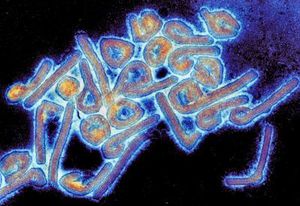Evolution in the Gulf of Maine
==Introduction==
The topic must include one section about microbes (bacteria, viruses, fungi, or protists). This is easy because all organisms and ecosystems have microbes.
Compose a title for your page.
Type your exact title in the Search window, then press Go. The MicrobeWiki will invite you to create a new page with this title.
Open the BIOL 116 Class 2019 template page in "edit."
Copy ALL the text from the edit window.
Then go to YOUR OWN page; edit tab. PASTE into your own page, and edit.
At right is a sample image insertion. It works for any image uploaded anywhere to MicrobeWiki. The insertion code consists of:
Double brackets: [[
Filename: PHIL_1181_lores.jpg
Thumbnail status: |thumb|
Pixel size: |300px|
Placement on page: |right|
Legend/credit: Electron micrograph of the Ebola Zaire virus. This was the first photo ever taken of the virus, on 10/13/1976. By Dr. F.A. Murphy, now at U.C. Davis, then at the CDC.
Closed double brackets: ]]
Other examples:
Bold
Italic
Subscript: H2O
Superscript: Fe3+
Section 1 Evolution
The Atlantic lobster, Homarus americanus, has been a vital organism for the ecosystem and economy of the Gulf of Maine. Data from fossils suggests lobsters have been present since the Cretaceous period, when they were more diverse than during the Tertiary period (Tshudy 2003). That diversity increased again later. Recent fluctuations in the populations of H. americanus have been predominantly affected by climate change and the fishing industry. The Gulf of Maine measured tempuratures at the sea surface have significantly increased in recent years from global warming, and while it is currently causing an increase in the population of Atlantic lobsters, any further warming will have adverse effects on the species (Greene 2016). Another reason for the current increase in abundance of lobsters is the decrease of Atlantic cod from climate change and overfishing (Gulf of Maine Research Institute 2012). One of the potential threats is epizootic shell disease, which causes shell erosion and appears more prevalently from northern regions compared to the south (Glenn 2006). The lobster fishing industry has been heavily regulated like the requirement of a minimum length from the eye socket to the beginning of the tail of 3.25 inches to allow a little less than 50% of lobsters to reproduce before being caught (Gulf of Maine Research Institute 2012). Nevertheless, these regulations cannot compensate for the large percentage of lobsters that are taken from their habitat, which has led to a historical decrease in the abundance of lobsters in the Gulf of Maine.
Include some current research, with at least one image.
Sample citations: [1]
[2]
A citation code consists of a hyperlinked reference within "ref" begin and end codes.
Section 2 Microbiome
Include some current research, with a second image.
Conclusion
Overall text length should be at least 1,000 words (before counting references), with at least 2 images. Include at least 5 references under Reference section.
References
Edited by [Madi Hamilton], student of Joan Slonczewski for BIOL 116 Information in Living Systems, 2019, Kenyon College.

